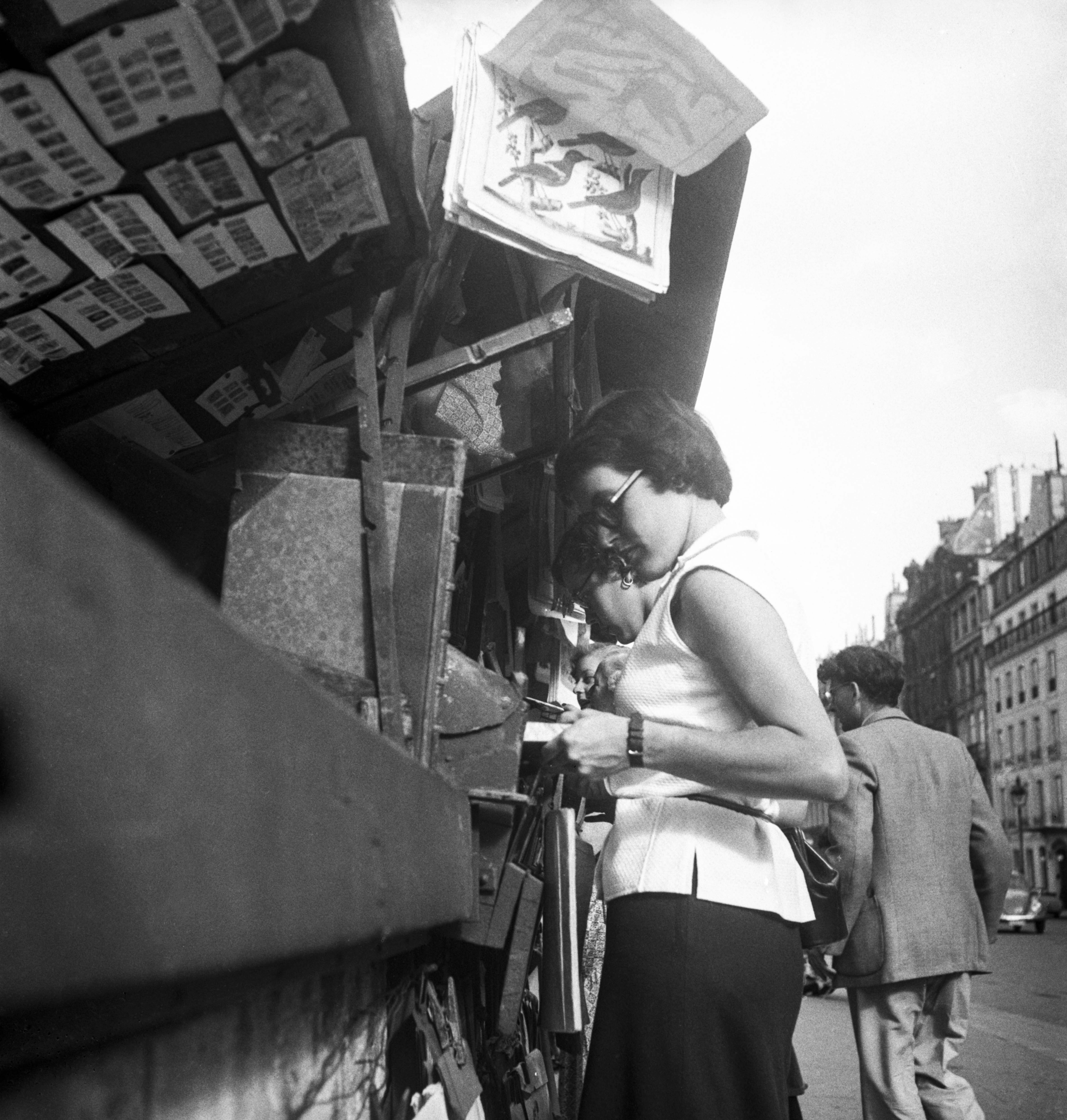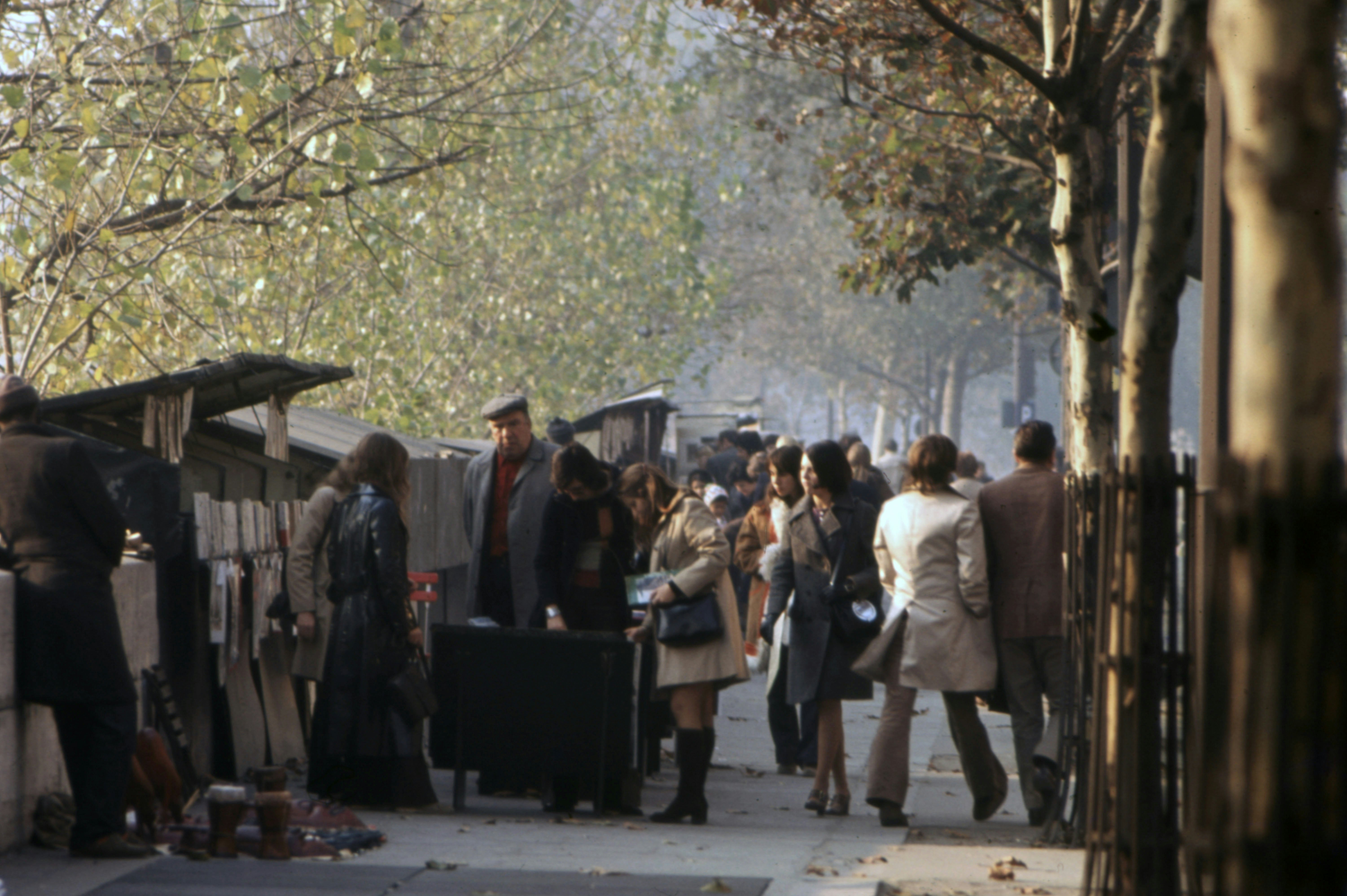Paris's beloved booksellers secure victory to stay put during this summer's Olympics

Feb 15, 2024 • 4 min read

The open-air book stalls along the banks of the Seine are a beloved Paris institution © Shutterstock
For centuries, the iconic wooden bookstalls lining the banks of the Seine have been an integral part of Paris' charm. Yet, as the city gears up to host the Paris Olympic, the government's initial decision to shut these kiosks throughout the event, citing security concerns, ignited widespread controversy and disappointment. The move was unprecedented since the book stalls took up full-time residence along the Seine more than 160 years ago.
You could say that the riverside booksellers and their iconic green book stalls are as much a fixture of the Seine as the Eiffel Tower is of the city’s skyline. But in a remarkable turnaround this week, French president Emmanuel Macron intervened, emphasizing the importance of these booksellers to the city's heritage. In a decision celebrated throughout Paris, Macron declared the booksellers (bouquinistes) a "living heritage of the capital," thereby allowing them to remain open during the Olympics.
Macron "has asked the interior minister and the Paris prefect’s office that all of the booksellers are preserved and that none of them are forced to move," a statement from the president’s office said.

The "enemies of poetry"
Earlier last year, Paris police warned the 240 booksellers that 570 of the 900 boxes would have to be dismantled. Along with serving as potential hiding spots for explosives, police said they’re potential safety hazards and would impede the flow of pedestrian traffic. The opening ceremony for the summer games takes place on the Seine river, and the upper quays are expected to draw hundreds of thousands of spectators.
The city offered to renovate and reinstall damaged stalls, and also to relocate the booksellers – but news that the city’s open-air bookshop could disappear during the games renewed interest and mobilized public support for the beleaguered booksellers, who have had to contend, in quick succession, with Yellow Vest protests, the pandemic and competition from online retail giants.
The issue escalated to the national spotlight last August when Le Monde newspaper published a passionate opinion piece backing the booksellers. Among the supporters was Alexandre Jardin, a well-known French author, who argued that the bouquinistes were more than mere vendors; they were emblematic of Paris itself and its longstanding relationship with literature. bouquinistes represent much more than just sellers; they are symbols of Paris and its ties to literature.
"The Seine flows between rows of books," Jardin said, arguing that it was wrong to close down a beloved part of Paris before such a huge international event. He said the decision to close them showed that officials didn't care about cultural heritage, calling them "enemies of poetry."
The recent decision to allow the bookstalls to remain open represents not just a win for the booksellers, but a reaffirmation of Paris's identity and cultural heritage.
A tradition for five centuries
Every morning that Paris’s riverside bouquinistes lift the lids of their stalls and set up for the day, they carry on a rich literary tradition that began 450 years ago, when their predecessors hawked books from baskets slung around their necks, or spread their wares on trestle tables along the quays of the Seine.
The inauguration of the Pont Neuf (“New Bridge”) in 1606 also provided book peddlers a lively outdoor marketplace, space in which they jockeyed for customers alongside teeth pullers, jugglers, dog shearers, prostitutes and charlatans whose cure-all remedies claimed to heal everything from poison to lovesickness. Yet the success of the hawkers who sold secondhand books, distributed political pamphlets and staged public readings angered local bookshop owners. In 1649, the peddlers were banned from Pont Neuf and driven away. The ban would be the first of several attempts to chase away the quayside booksellers over the centuries.
In 1721, an ordinance threatened to fine and imprison peddlers who sold new and old books in the open air; in the 19th century, Baron Haussmann wrote the quayside bouquinistes out of his massive plan to transform Paris. It wasn’t until 1859 that the booksellers were finally assigned fixed lots along the Seine. In 1891, the vendors were allowed to leave their goods in stalls overnight, cementing their permanence on the streets of the French capital.
Around 1900, boxes were painted the same “wagon” green hue as the Wallace water fountains and Morris advertising columns, creating coherence with the rest of the city’s street fixtures. The stalls look largely the same as they did more than a century ago.

How to enjoy the bouquinistes on your next visit to Paris
Spanning the length of two miles on either side of Seine, from the Quai François Mitterand to the Quai de l’Hôtel de Ville on the Right Bank, and the Quai Voltaire and the Quai de la Tournelle on the Left Bank, the bouquiniste trail takes flaneurs past the Notre Dame Cathedral and the Louvre, with views of the Seine and Eiffel Tower in the distance.
While they’re a Paris treasure, the bouquinistes are sometimes wrongly identified as being a Unesco World Heritage asset: in fact, it’s the banks of the Seine that were inscribed on the World Heritage List in 1991. The booksellers were instead inscribed in France’s version of the intangible cultural heritage list in 2019, a precondition for qualification for Unesco status.
Seine bouquinistes throughout the years
1920s

1930s

1940s

1950s

1960s

1970s







